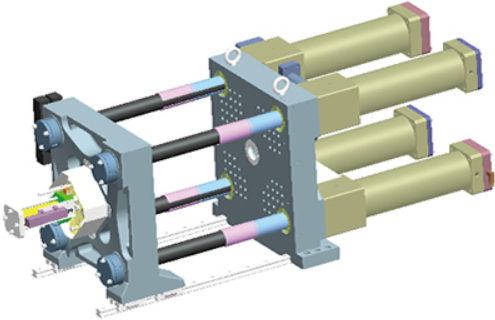
Calculating the tonnage required for an injection molding machine is essential to ensure the machine can provide enough clamping force to keep the mold closed during the injection process. The tonnage calculation depends on various factors, including the part size, material type, mold design, and safety factor. Here’s a step-by-step guide on how to calculate the injection molding machine tonnage:
Steps to Calculate Injection Molding Machine Tonnage
- Determine the Projected Area of the Part:
- Calculate the projected area of the part in square inches (or square centimeters). This is the area of the part as seen from the direction of the injection molding machine’s clamping force.
- Calculate the Projected Area of the Runners and Gates:
- Include the projected area of the runners and gates in the total projected area calculation.
- Calculate the Total Projected Area:
- Add the projected area of the part to the projected area of the runners and gates to get the total projected area.
- Determine the Material Factor:
- Different plastic materials have different clamp force requirements. The material factor (usually measured in tons per square inch) accounts for this variation. Typical material factors are:
- Polystyrene (PS): 2-3 tons/in²
- Polypropylene (PP): 2-3 tons/in²
- Polyethylene (PE): 2-3 tons/in²
- Nylon (PA): 3-5 tons/in²
- Acrylonitrile Butadiene Styrene (ABS): 3-5 tons/in²
- Polycarbonate (PC): 4-6 tons/in²
- Different plastic materials have different clamp force requirements. The material factor (usually measured in tons per square inch) accounts for this variation. Typical material factors are:
- Calculate the Required Clamping Force:
- Multiply the total projected area by the material factor to determine the required clamping force in tons.
Example Calculation
Let’s assume we are molding a part with the following dimensions and material properties:
- Part dimensions: 5 inches (length) x 4 inches (width)
- Runner and gate area: 1 square inch
- Material: Polypropylene (PP) with a material factor of 2.5 tons/in²
- Calculate the Projected Area of the Part: Projected Area of the Part=5inches×4inches=20in²
- Calculate the Total Projected Area: Total Projected Area=20in²+1in²=21in²
- Calculate the Required Clamping Force:Required Clamping Force=21in²×2.5tons/in²=52.5tons
Therefore, the injection molding machine should have a clamping force of at least 52.5 tons to mold the part.
[elementor-template id=”4330″]
Considerations
- Safety Factor:
- It’s advisable to include a safety factor (usually around 10-20%) to account for variations in material properties and other factors.
- Mold Design:
- Complex molds with multiple cavities or high injection pressure requirements may need higher clamping force.
- Material Properties:
- The material factor may vary based on the specific grade of plastic being used. Consult material datasheets or manufacturers for precise values.
- Part Geometry:
- Thin-walled parts or parts with large surface areas may require additional considerations for clamping force.
By following these steps and considerations, you can accurately calculate the tonnage required for an injection molding machine to ensure successful and efficient production.
Related Conten: Injection Mold Manufacturing
 DTG Mould Trade Process |
|
| Quote: | According to sample, drawing and specific requirement. |
|---|---|
| Discussion | Mold material, cavity number, price, runner, payment, etc. |
| S/C Signature | Approval for all the items. |
| Advance | Pay 50% by T/T |
| Product Design Checking | We check the product design. If some position is not perfect, or can not be done on the mould, we will send customer the report. |
| Mold Processing | Send report to customer once each week |
| Mold Testing | Send trial samples and try-out report to customer for confirmation |
| Mold Modification | According to customer’s feedback. |
| Balance Settlement | 50% by T/T after the customer approved the trial sample and mould quality. |
| Delivery | Delivery by sea or air. The forwarder can be designated by your side. |
 |
|

